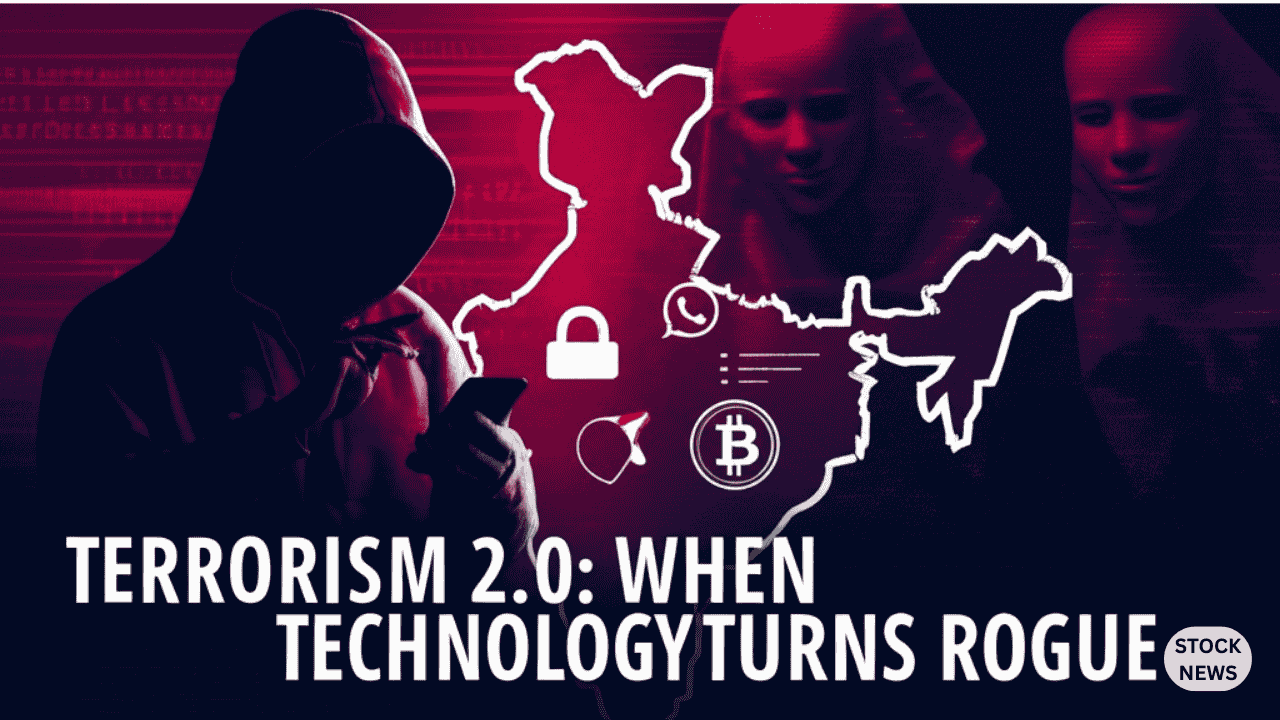In the aftermath of the recent terrorist attack in Pahalgam, Jammu & Kashmir, which claimed the lives of several innocent civilians, the country finds itself not only mourning a tragedy but grappling with the evolving tactics of modern-day terrorism—tactics that no longer rely solely on weapons, but on technology, misinformation, and deeply embedded networks.
The attack, described by security experts as “an assault on humanity itself,” has reignited national debate around the complex intersection of digital communication tools, encrypted platforms, the dark web, and transnational terror networks. While the physical violence is visceral, the mechanisms behind such operations are increasingly sophisticated and invisible—happening in the shadows of cyberspace and exploiting the very tools billions use daily.
Technology: From Innovation to Exploitation
2008 was a watershed year. The iPhone emerged, WhatsApp was born soon after, the dark web expanded, and Bitcoin—an anonymous, decentralized digital currency—made its quiet debut. Just as these innovations were reshaping modern life, terrorists were learning to repurpose them.
“Innovation doesn’t discriminate between good and evil,” noted one former cybersecurity advisor who worked with Indian law enforcement post-26/11. “These tools were designed to connect us. But in the wrong hands, they became weapons.”
The dark web and Bitcoin, for instance, evolved symbiotically. The anonymity of cryptocurrency offered the perfect payment system for illicit trade—guns, narcotics, and even contract killings. Meanwhile, devices like iPhones, armed with military-grade encryption, became preferred tools of criminals seeking secure communication.
The Invisible Channels of Communication
Authorities investigating the Pahalgam attack have revealed the use of “SIM-less, internet-free” communication networks by the perpetrators. These networks, rooted in device-to-device Wi-Fi transmission, don’t rely on traditional cellular or internet infrastructure, making them almost impossible to intercept.
“These methods create peer-to-peer mesh networks,” the source explained. “Messages pass from one device to another, syncing in short bursts when users come within range—like in a mosque, a market, or a protest. No data is sent over the internet. It’s ghost communication.”
Similar apps masquerade as religious or utility apps. Once installed, they allow encrypted data to hop silently from phone to phone, far outside the radar of telecom or intelligence surveillance. The system relies on community-based “data mules”—unwitting participants who carry information without ever accessing or understanding it.
Deepfakes and Psychological Warfare
Adding to the threat is the rise of AI-powered misinformation. In the days following the Pahalgam attack, numerous deepfake videos surfaced—doctored visuals allegedly showing Indian Army personnel committing atrocities. These videos, largely debunked using tools like Turkey’s deepware.ai, aim to manipulate public sentiment and reignite communal tensions.
“After the attack, something remarkable happened,” a senior intelligence official recounted. “Locals came forward to condemn the violence. There were candlelight marches. People stood united. That’s when the digital counterattack began—AI-generated content aimed at flipping the narrative and sowing distrust.”
These campaigns, experts say, are often state-sponsored. Groups like Pakistan-backed APT 36 have been linked to phishing and misinformation operations designed to harvest sensitive data, particularly from defense personnel. Fake emails and documents—with convincing subject lines like ‘Revised SOP for WebEx Meetings’ or ‘Report Update on Pahalgam Attack’—are being used to deploy spyware and extract intelligence.
A Coordinated Conspiracy
The complexity of such attacks reveals the depth of their planning. The Pahalgam assault, like the 2008 Mumbai attacks, was not the work of isolated actors. It involved multiple layers of planning, logistics, and local collaboration. From cyber reconnaissance to real-time surveillance, the attackers had access to detailed information about security patrols and coastal monitoring.
“Before any major attack, there is always a digital breach,” an investigator confirmed. “They knew exactly when and where the Coast Guard would be patrolling. That kind of intel only comes from cyber theft or an insider.”
The Indian security infrastructure, though increasingly tech-savvy, is now in an arms race against an evolving enemy—one that doesn’t just train in camps, but in code.
Exploiting Curiosity and Compassion
The real danger, many experts argue, lies not just in bullets and bombs, but in emotional manipulation. Cybersecurity professionals warn that public curiosity following terror attacks is often weaponized. Fake news links disguised as government updates or donation portals flood messaging platforms like WhatsApp—another tool once heralded for its connectivity but now infamously hard to trace.
Security analyst groups have identified domains like kashmirattack.exposed masquerading as official sources. These phishing websites mimic the URLs of trusted institutions (JAMMU & KASHMIR POLICE) to mislead users and gain unauthorized access to personal and professional data.

The War for Truth
India’s defense against terrorism must now include a parallel battle for digital truth. Every smartphone is a potential node in this conflict. Every app, a double-edged sword.
“We must remain vigilant,” urged one official, “not just about bombs and guns—but URLs, links, messages. Misinformation spreads faster than gunfire. And if we’re not careful, it can cause even more damage.”
Law enforcement agencies are urging the public to verify links using secure tools like MobiArmor before clicking, and to report suspicious content. Deepfake detection tools, phishing scanners, and public awareness are becoming as critical as border patrols and surveillance drones.
Conclusion: A Call for Conscious Technology
The Pahalgam attack is not just a tragedy—it is a reminder. A reminder that the tools we cherish can be turned against us. That in the age of digital warfare, vigilance must extend beyond checkpoints to chatrooms, from coastlines to code.
And above all, it is a call to confront a dangerous contradiction: those who kill in the name of God diminish not just their victims, but the very faith they claim to uphold.
“No true God asks for murder,” said one security expert. “When someone says they kill for their God, they don’t elevate their God. They reduce Him to their own hatred.”
India, and the world, must now decide: will we allow our technology to empower peace—or enable destruction?
